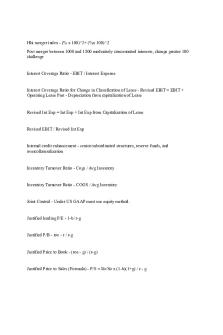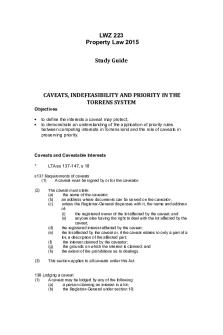Matlab Note 1-1 PDF

| Title | Matlab Note 1-1 |
|---|---|
| Author | wen xie |
| Course | Introduction to Programming |
| Institution | 國立清華大學 |
| Pages | 3 |
| File Size | 208.4 KB |
| File Type | |
| Total Downloads | 94 |
| Total Views | 146 |
Summary
MATLAB...
Description
Parentheses:括弧 Tables, cell arrays, and structures are MATLAB data types that store heterogeneous data. A table in MATLAB looks like a table you might see in a report or spreadsheet. Each column is named and has a single data type. Cell arrays are also rectangular but are more flexible than tables, because each element can hold any data type of any size. Cell arrays do not have named columns and must be indexed numerically. Structures are good when you have non-tabular, named data that you want to collect together in a single variable.
Organizing Workspace Variables in a Table When several variables in your workspace hold data about the same observations, you can use the table function to collect this information into a table.
tbl = table(var1,var2, 'VariableNames',{'Thought1','OnSecondThought'})
You can join tables together with the join function to match corresponding rows using key variables. >> newTbl = join(tbl1,tbl2,"Keys",["Var1" "Var2"])
Extracting Portions of a Table
Extracting from a Single Column Using Dot Notation variableData = tableName.VariableName
Extracting from Multiple Columns Using Curly Braces variableData = tableName{rowIndices,colIndices}
Use logical vectors to check idx = fleet.Type == "compact" smallCars = fleet{idx,["Make" "Model"]} The vartype function allows you to select all columns of a specific data type. For instance, T{:,vartype("categorical")} extracts data from all of the categorical columns and outputs a categorical array.
Cell arrays can be used to combine related variables of different sizes. 用{ , ; } ,分隔一列中的東西 ;換列 Categories function
lower function...
Similar Free PDFs

Matlab Note 1-1
- 3 Pages

Práctica 11 Matlab
- 9 Pages

Note 11 - Health Law
- 6 Pages

Note 11 - CFA
- 9 Pages

Chapter 11 review note
- 4 Pages

Notes ch 11 - note
- 10 Pages

Curs 11 - Note de curs 11
- 14 Pages

Mehrsa-Die Singammer - Note: 11
- 5 Pages

MATLAB
- 2 Pages

Graficas-Matlab - Resuemenes Matlab
- 24 Pages

Note - Note
- 27 Pages

MKT NOTE WEEK 11- Chapter 14
- 2 Pages
Popular Institutions
- Tinajero National High School - Annex
- Politeknik Caltex Riau
- Yokohama City University
- SGT University
- University of Al-Qadisiyah
- Divine Word College of Vigan
- Techniek College Rotterdam
- Universidade de Santiago
- Universiti Teknologi MARA Cawangan Johor Kampus Pasir Gudang
- Poltekkes Kemenkes Yogyakarta
- Baguio City National High School
- Colegio san marcos
- preparatoria uno
- Centro de Bachillerato Tecnológico Industrial y de Servicios No. 107
- Dalian Maritime University
- Quang Trung Secondary School
- Colegio Tecnológico en Informática
- Corporación Regional de Educación Superior
- Grupo CEDVA
- Dar Al Uloom University
- Centro de Estudios Preuniversitarios de la Universidad Nacional de Ingeniería
- 上智大学
- Aakash International School, Nuna Majara
- San Felipe Neri Catholic School
- Kang Chiao International School - New Taipei City
- Misamis Occidental National High School
- Institución Educativa Escuela Normal Juan Ladrilleros
- Kolehiyo ng Pantukan
- Batanes State College
- Instituto Continental
- Sekolah Menengah Kejuruan Kesehatan Kaltara (Tarakan)
- Colegio de La Inmaculada Concepcion - Cebu



